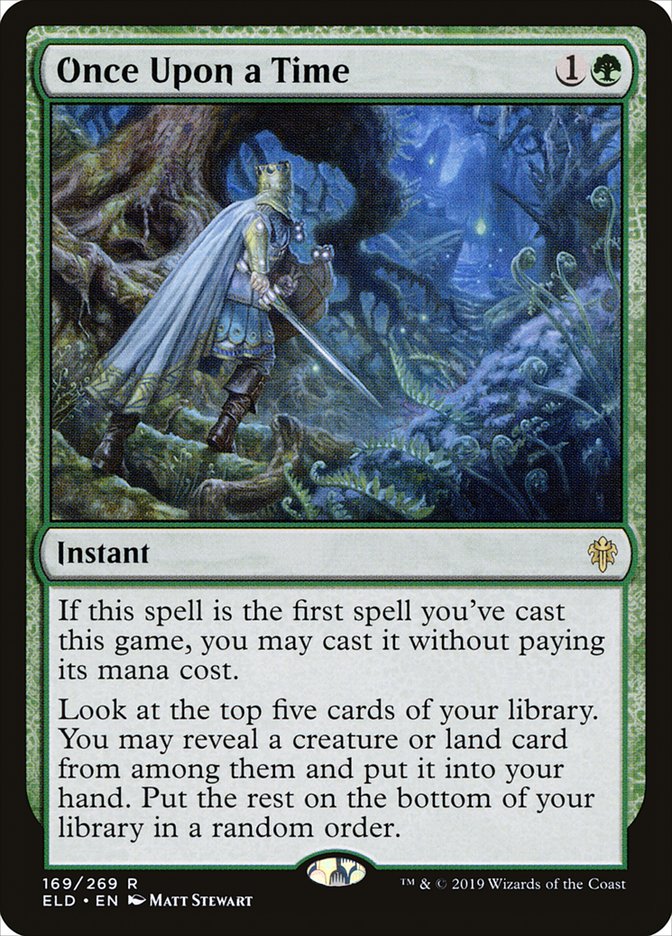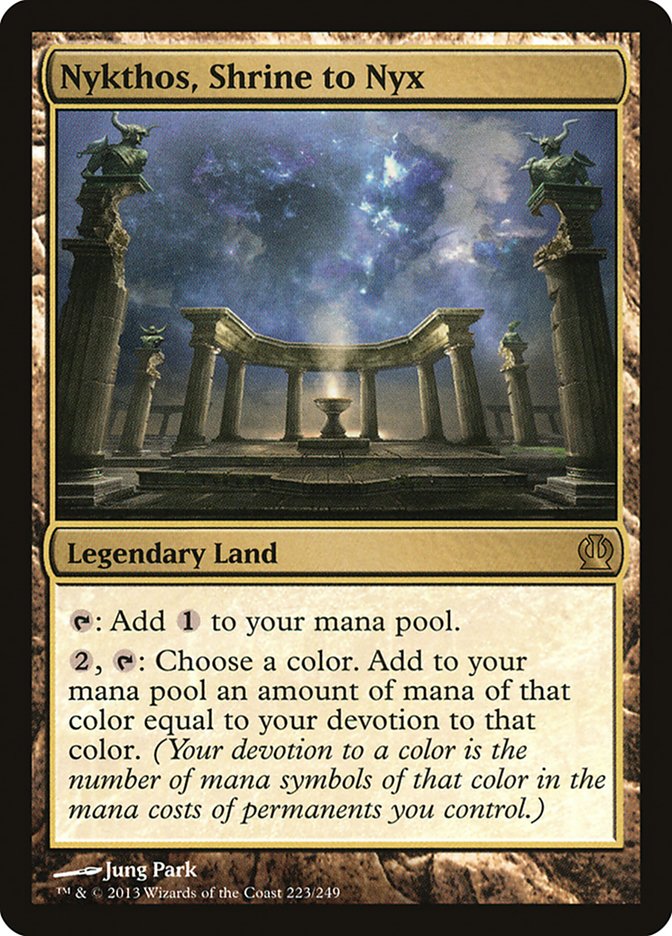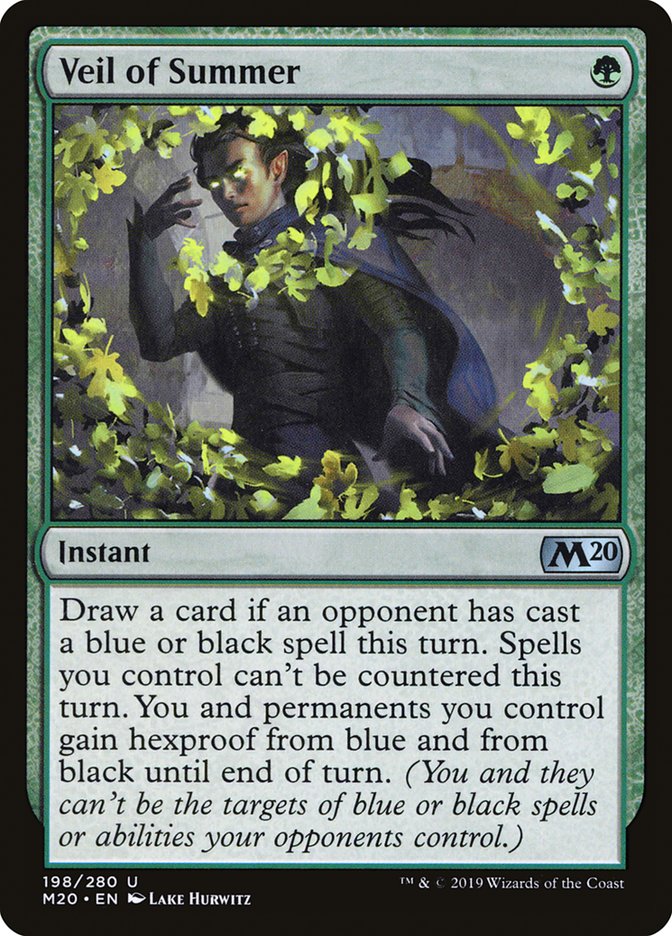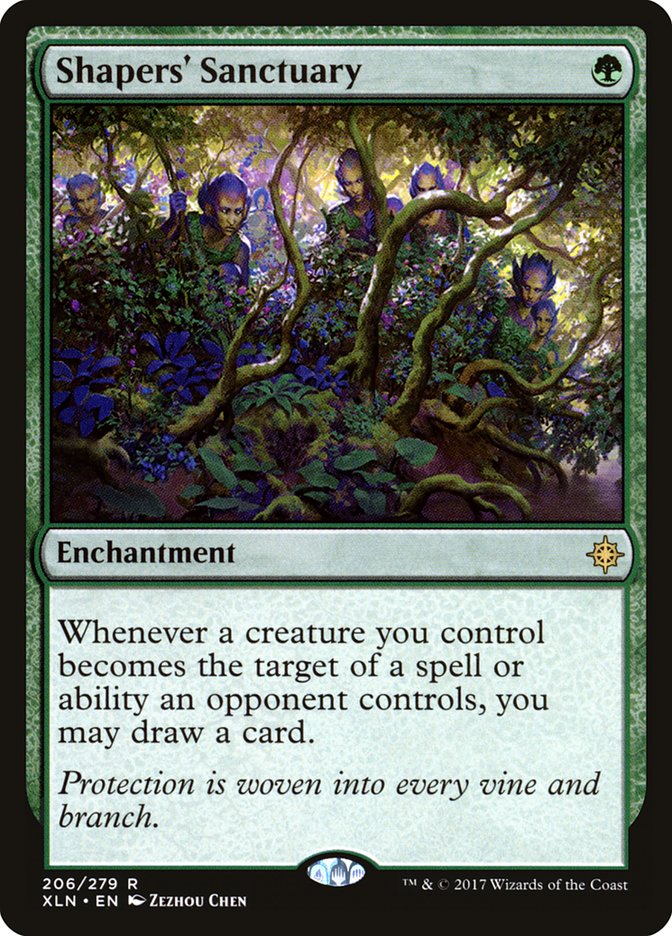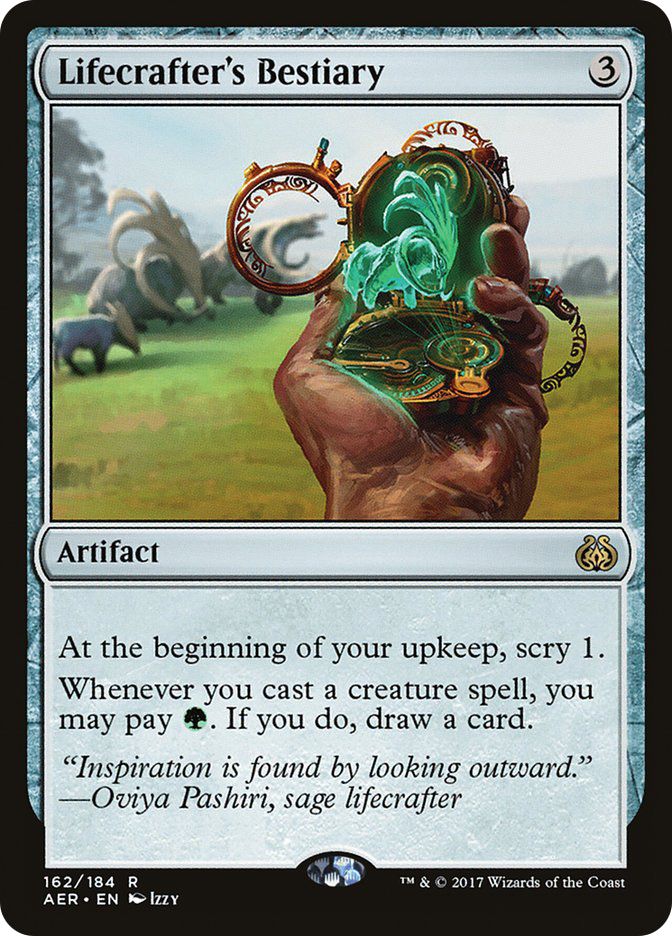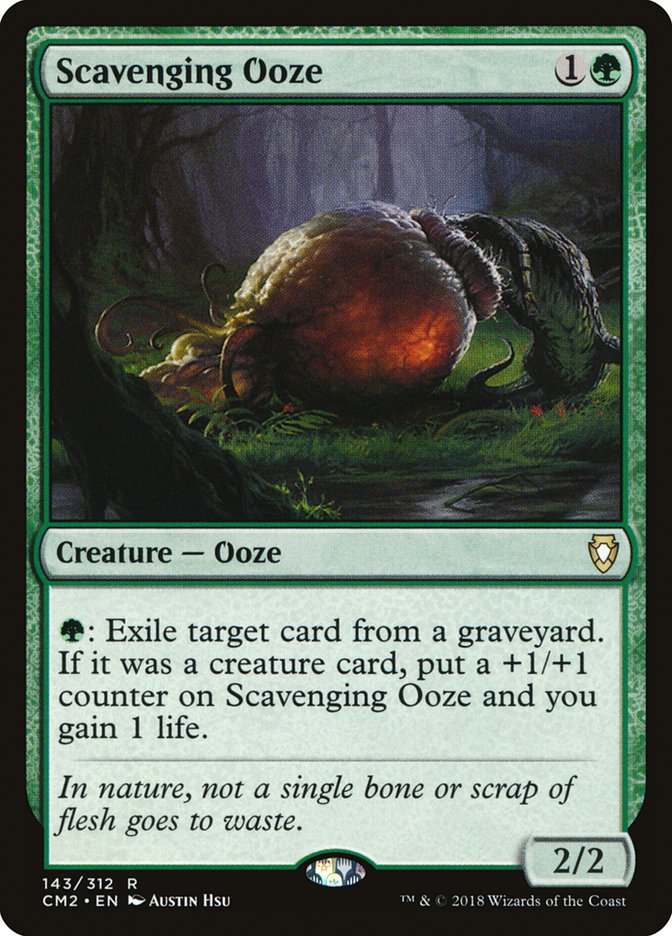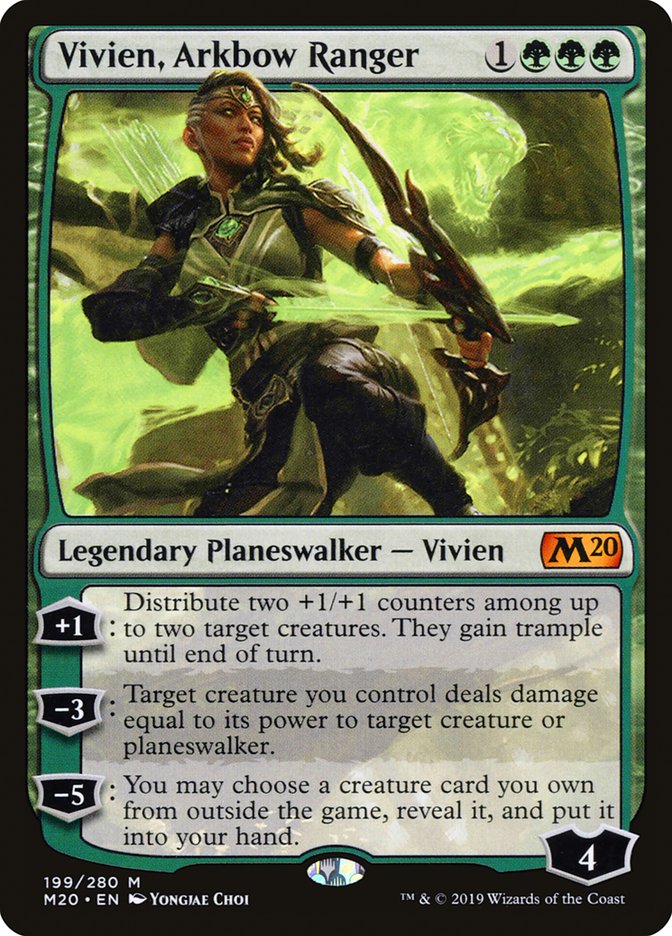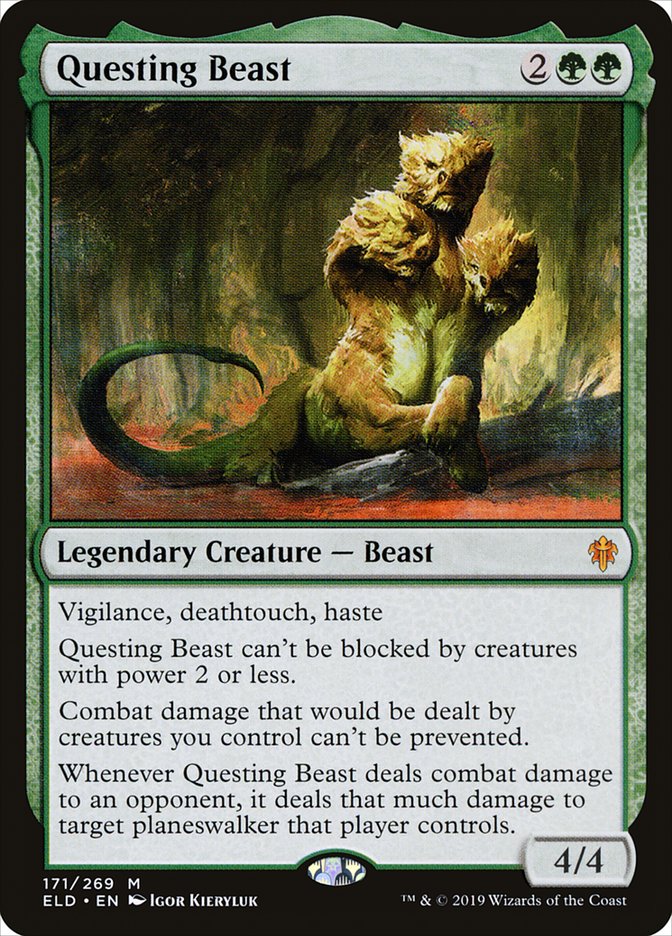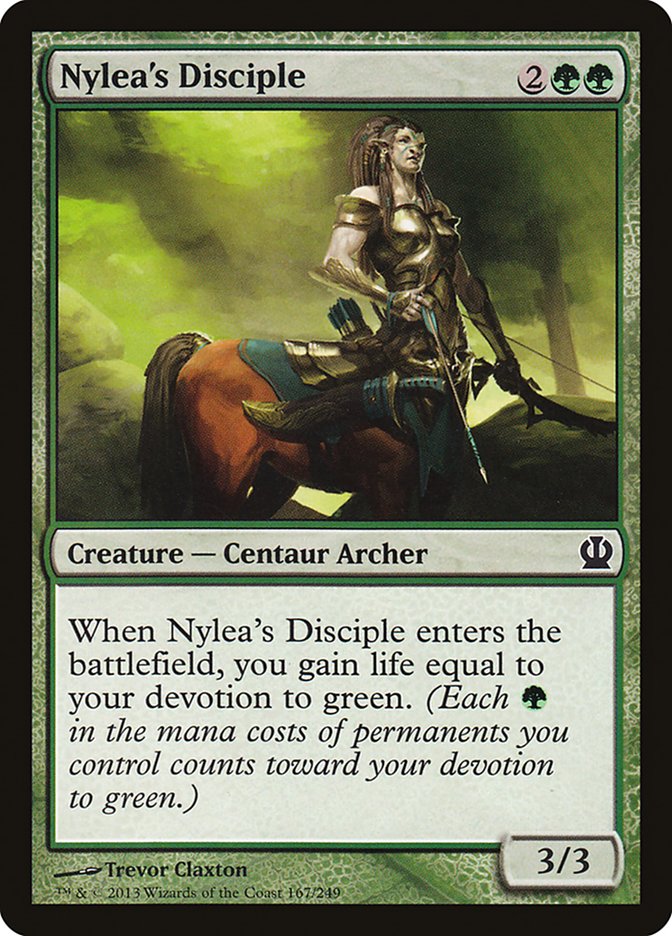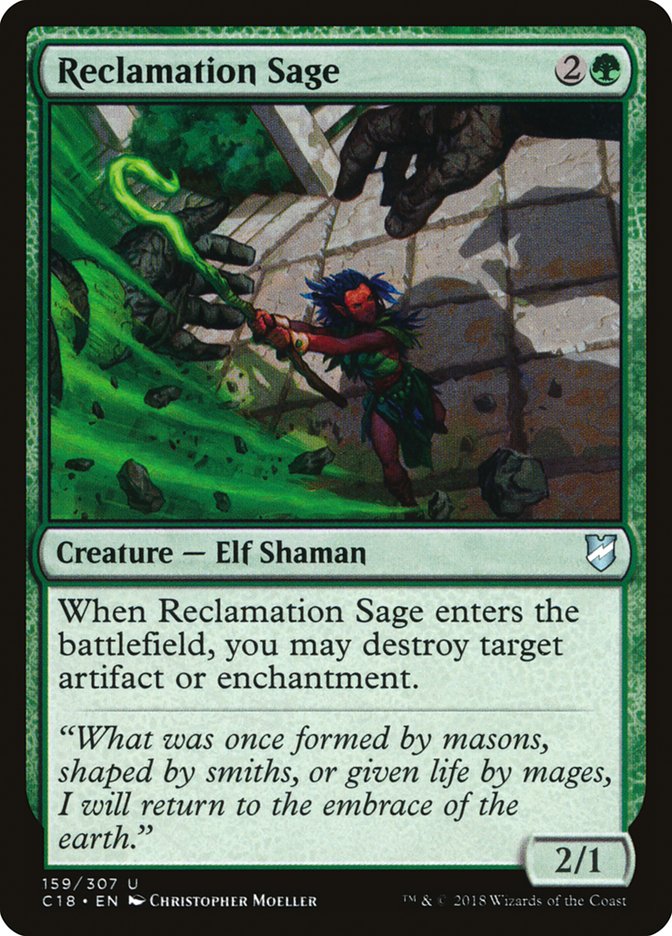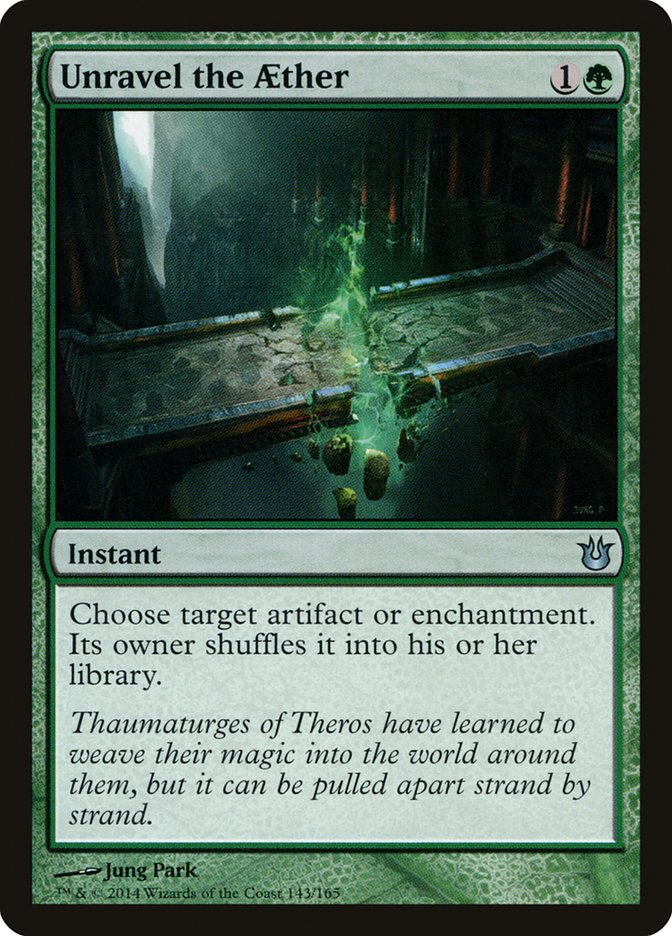I think I’ve successfully proven the strength and resiliency of Mono-Green Devotion over the last two weeks. In both Magic Online PTQs, I was the only undefeated player after the Swiss rounds. And while both runs fell a little short of the finish line, I’m very happy with my build and play in those two tournaments.
After having Leyline of Abundance and Oath of Nissa banned, a lot of people thought Mono-Green Devotion was much weaker. My build proved them wrong, putting me into the Top 8 of a 300-plus-person event and completely dominating the Pioneer Challenge on Sunday with five copies in the Top 8, including the eventual winner who played my exact 75.
So when Monday rolled around, I expected them to take an axe to my deck, chopping down Once Upon a Time and maybe even Nykthos, Shrine to Nyx. These two cards are the core of the deck’s consistency and strength. Much like the bans before it, Leyline of Abundance was banned for outrageous mana generation and Oath of Nissa was banned for giving the deck that high level of consistency. In many ways, these two cards do that better.
Instead, they just banned a sideboard card, and one that I didn’t even really think was that much better than Shapers’ Sanctuary at that.
I did switch back to Veil of Summer for this past weekend’s events, as I was playing against many more decks with counterspells and Thoughtseize. Shapers’ Sanctuary was phenomenal against removal-heavy strategies but was pretty bad against stuff like Azorius Control that just countered or used Supreme Verdict to sweep everything up. Alongside Veil of Summer, I also brought Lifecrafter’s Bestiary to help grind through all the counters and removal. But now that Veil of Summer is banned, it might be necessary to rethink our approach to these matchups. After all, Shapers’ Sanctuary is good against stuff like Golgari or Sultai Midrange, but relatively weak against Azorius or Esper Control.
I think the combination of these two cards should help cover you from most interaction, giving you some much-needed card advantage when facing off against people trying to smoosh all your creatures. I will say that Shapers’ Sanctuary is a strange one in that you never actually get to see just how good it is, because your opponents will almost never kill your creatures when it is on the battlefield. So while it is probably great, it never feels as good as something like Veil of Summer or Lifecrafter’s Bestiary because of the virtual card rot from the opponent.
Lifecrafter’s Bestiary lets you just go ham on your opponent without a care in the world. Casting another creature is almost never a big deal because it draws a card. The scry every turn is also a powerful part of this defensive mechanism, making sure you hit land drops or find gasoline on just about every draw step.
I’ve tried literally dozens of cards in the Scavenging Ooze slot. My testing found that the other 57 cards are basically perfect, and this slot just didn’t matter much in terms of its effect on the game itself. However, once in a while you’ll play against a graveyard deck or Burn strategy and having Scavenging Ooze is awesome. At all other times, it’s just another thing with a pip of devotion that you can cast off Burning-Tree Emissary.
I found that this slot needs to be high-impact in the matchups where it’s good. I found all the other two-drop mana accelerators were terrible, and I can’t really put my finger on why. Maybe eight Elves is enough. Maybe having to spend two mana on the same thing as your one-mana spell just feels bad. Regardless, I think you want something to cast off Burning-Tree Emissary without needing an Elf to survive. I know it looks weird and doesn’t really “fit” into the deck that well, but the alternatives are just as bad and don’t have the upside of being busted against the graveyard decks.
Lastly, adding Scavenging Ooze to the maindeck was a concession to giving me more sideboard space. If you cut Scavenging Ooze for Sylvan Caryatid or Paradise Druid or whatever, you have to put Scavenging Ooze back into the sideboard, which will eat up precious space.
Without further ado, let’s take a look at what I’ll be playing this weekend at the Season Two Invitational in Pioneer.
Creatures (27)
- 4 Llanowar Elves
- 3 Scavenging Ooze
- 4 Burning-Tree Emissary
- 4 Elvish Mystic
- 4 Walking Ballista
- 4 Jadelight Ranger
- 4 Voracious Hydra
Planeswalkers (8)
Lands (21)
Spells (4)

What to Sideboard Out
We’ll be going over how to sideboard in a moment, but there are a few things I want to point out before we get there. First of all, I want to stress that there are a lot of matchups where you just don’t want to sideboard at all. Our maindeck is almost perfect, so taking out anything means we’re going to be losing the power of our well-oiled machine. If you don’t see anything in your sideboard that immediately stands out to you as “Wow, this card is good against my opponent,” chances are you’ll do better by not sideboarding out anything than sideboarding five or six cards.
The biggest part of sideboarding I want to stress is what to take out and when. For starters, as I mentioned above, the 57 cards in the maindeck that aren’t Scavenging Ooze are important in most matchups, but there are some opposing decks where some of your interaction or payoff cards just aren’t getting the job done. In the previous iteration before the initial bans, I sideboarded out Leyline of Abundance more than any other card because of how poorly it works when your opponent kills your mana creatures. Now it’s a bit more difficult to figure out what to cut and when.
- Scavenging Ooze can go.
If you are unsure of what to cut and you know you want to bring in a sideboard card or three, Scavenging Ooze can go. Even if your opponent has Treasure Cruise, Dig Through Time, or some other light graveyard interaction, Scavenging Ooze can go. Don’t overthink it.
- Walking Ballista isn’t untouchable.
Walking Ballista is one of your better payoff cards and a great pairing for Vivien, Arkbow Ranger. Putting extra counters on your Walking Ballista is very good, but this type of card is not the best against opponents with sweeper effects or without a lot of creatures. Just having a big colorless (worse) Fireball isn’t all that good against an opponent where you aren’t killing something with your Walking Ballista. And while Voracious Hydra is similarly mediocre against opponents without creatures, it can add to devotion to end the game more quickly by having a huge body.
- Jadelight Ranger is bae.
Jadelight Ranger is awesome. I definitely undervalued its ability in my initial testing, thinking the extra lands from Courser of Kruphix would be better, but the double explore is awesome against people who are trying to interact with you since it can help you naturally hit land drops. It’s also a great mid-game play for helping dig for payoffs. I can’t stress enough how good Jadelight Ranger has been for me. It’s also good in just about every matchup.
- Never cut Once Upon a Time, Elves, or Burning-Tree Emissary.
Even if your opponent has something like Anger of the Gods, cutting any of your cheap creatures will make your deck worse. These are the reasons to play this deck, as they allow for explosive starts that no other deck in the format can match. And while having your early stuff swept up by a three-mana spell is a bummer, you’ll occasionally stick a planeswalker before that happens and invalidate it almost completely.
In the past, I’ve cut some number of Once Upon a Time because I couldn’t figure out what else to cut. In hindsight, that was just a mistake. Again, I’d rather sideboard nothing in than cut the wrong card. Elves, Burning-Tree Emissary, and Once Upon a Time make your deck tick. I’d usually mulligan a hand that has none of these cards, so sideboarding them out just doesn’t make sense.
- Cutting Vivien or Nissa is rare, but occasionally correct.
Some matchups, you just want to lower your curve. In order to do that, it requires cutting some of your four- or five-drops. In matchups where your opponent is attacking your early mana creatures with Wild Slash while applying pressure to your life total, these planeswalkers aren’t nearly as good as they might seem. Vivien, Arkbow Ranger can’t protect itself, so if you have no creatures on the battlefield it doesn’t really do anything. I almost never sideboard out Nissa, Who Shakes the World, as it’s just one of your best possible draws when you have five or more mana.
Against Mono-Red, if you need to sideboard out anything, trimming down on Vivien is fine. It doesn’t do a whole lot in the matchup because most of your creatures are dying in the first three turns. If you’re playing against Izzet Phoenix, trimming on Nissa is fine. You need Vivien to help “bite” Thing in the Ice, and Arclight Phoenix is notoriously great at attacking opposing planeswalkers.
What to Sideboard In
Remember that Vivien, Arkbow Ranger has the “Wish” clause for creatures out of the sideboard. That’s why we have an Ulamog, the Ceaseless Hunger hanging out. I talked last week about wanting to maindeck Ulamog, the Ceaseless Hunger, and Vivien, Arkbow Ranger gives you the ability to do just that without actually having to put it into your deck. The number of times I’ve cast Ulamog, the Ceaseless Hunger off Vivien, Arkbow Ranger is ludicrous.
As for other potential “Wish” creatures, I don’t know that you need a wide range. I’ve tried a number of different options, and I almost always want to get Ulamog, the Ceaseless Hunger or just keep ticking up or biting with Vivien. Questing Beast and Reclamation Sage are the exceptions, giving you a haste creature with evasion to kill planeswalkers or some way to destroy a troublesome artifact or enchantment.
As for when you want to sideboard some of these cards, Questing Beast is probably the one I’m asked about the most. Let me just say that losing to Simic Nexus will break you as a human being. Questing Beast helps you attack through Fog effects, but just having a powerful standalone threat is occasionally desirable if you expect to face off against control decks. Questing Beast doesn’t come in often, but it hits hard and closes games quickly when it does.
Questing Beast is a strange card with a lot of text, so don’t trick yourself into bringing it in just because one of the 231 abilities is relevant. I would describe my usage of Questing Beast as “sparingly.”
This one has been in the sideboard for a long time and will occasionally spike on your aggressive opponent. If they’re attacking your life total with small creatures, a bit of removal, and some reach, Nylea’s Disciple is right for you. If your Nylea’s Disciple can successfully block your opponent’s creatures, it’s probably good to bring it in. However, if all your opponent’s creatures have prowess and they’re just trying to pump them and attack you to death, it is much less important to focus on stuff like Nylea’s Disciple because the lifegain will only buy you a turn.
Nylea’s Disciple is significantly better if your opponent is focusing on killing you with stuff like Boros Charm. If you’ve watched me play this deck, you should also know that I don’t like sideboarding in Nylea’s Disciple very much. If they’re playing Crash Through, you probably don’t want this in your deck. If they’re hitting you for huge chunks of damage with stuff like Shrapnel Blast, it might be worth bringing in Nylea’s Disciple to try to “counter” those big bursts of damage.
These two are your last line of defense against a hostile world trying to attack you from weird angles. I’ve chosen to split them 2-2 because of their various situations in which one is better than another. Reclamation Sage adds to your devotion and can occasionally provide you with a worthwhile body. However, there are times where being able to cast this type of effect at instant speed is huge. It’s also pretty great to deal with Hangarback Walker permanently without giving them a ton of Thopter tokens.
These come in against a wide variety of opponents, but I’ll occasionally just bring in Reclamation Sage if I think they might have something annoying but aren’t a dedicated artifact or enchantment deck. The instant speed of Unravel the Aether is quite good against the likes of Azorius Control, as they rely on either Detention Sphere or Cast Out to deal with your planeswalkers, and unlocking them for cheap is a big deal.
The Unravel the Aether was added late last weekend in response to a potential boost in popularity of Izzet Ensoul. Ensoul Artifact on a flyer or Darksteel Citadel is tough, but having a few more ways to kill it is great!
I’ve talked about these two a little bit already, but suffice it to say that this section is for when your opponent is going to heavily disrupt your plans via removal, discard, or sweepers. They’re also great if your opponent isn’t putting a clock on you. Given enough time, these two cards should bury your opponent, but these aren’t going to be great against the likes of Mono-Red. However, I do like Shapers’ Sanctuary against stuff like Izzet Phoenix, if only because their easiest way to contain your creatures is their bevy of spot removal. Thing in the Ice is huge against you, but you just have to hope you can kill it before it transforms or they don’t draw it in the early turns.
Against Sultai or Jund or whatever removal-heavy deck without much pressure, these two cards should be pretty solid. Shapers’ Sanctuary was actually my pick over Veil of Summer in the first PTQ where I started 12-0, as it added to devotion. Since they banned Leyline of Abundance and Oath of Nissa, Nykthos, Shrine to Nyx is much worse than it was before, so turning on your devotion against removal-heavy opponents isn’t as important. That’s why I switched back to Veil of Summer and had Lifecrafter’s Bestiary as the anti-sweeper technology. With Veil of Summer banned, the one-two punch of these permanents means you don’t have to hold up mana and your creatures are relatively insulated from removal.
I never sideboard this one in because I want to find it with Vivien, Arkbow Ranger when I have a ton of mana. You have more virtual copies of it when you leave it in your sideboard.
Theory Behind the Cards
I talked about the theory behind these card choices a lot in my article from last Monday, but I feel like much of what was said in that article was overshadowed by the bans. I still think much of what I said in that article rings true, and it would behoove you to read it if you haven’t already.
I’ve played so much Pioneer in the last few weeks that I feel like my grasp on the format is on the nose. Choose interaction over goldfishing. Don’t try to kill people with Boros Charm or Shrapnel Blast. Go with Voracious Hydra over Hydroid Krasis. Make sure your cards are valuable at multiple points in the game.
I’ve tried out about 50 different decks so far, but I keep coming back to Mono-Green Devotion for a reason. And with a PTQ record of 21-2, after surviving a ban on two maindeck cards, the only thing I can say is that it’s just the best deck. I hope this “big picture” sideboard guide helps you out in whatever tournament you’re playing this weekend. Just remember one thing:
Don’t fix what ain’t broke.


